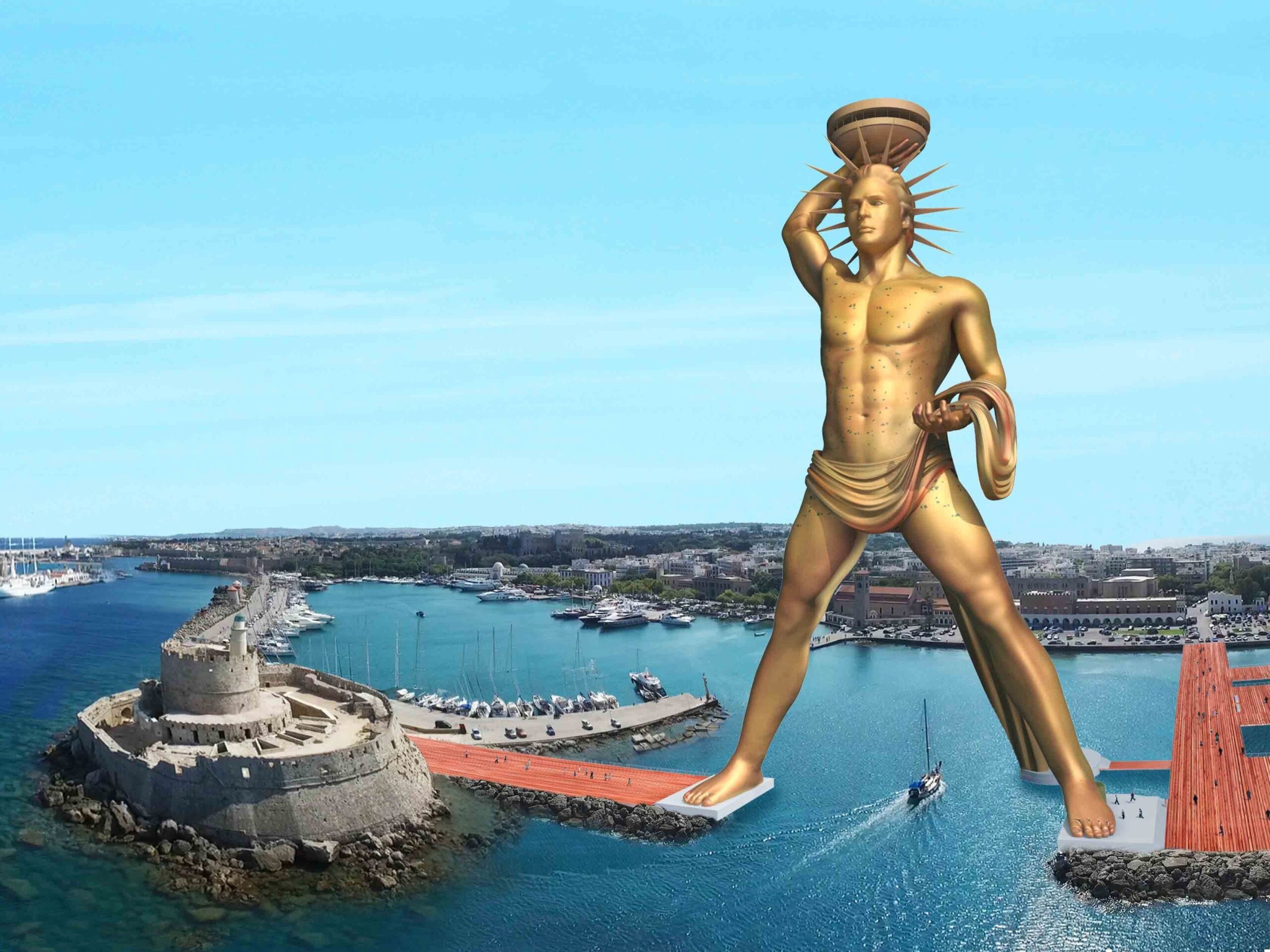
The Colossus of Rhodes: A Magnificent Wonder of the Ancient World
We are proud to present to you an informative and comprehensive article about one of the most iconic landmarks of the ancient world – the Colossus of Rhodes. In this article, we will take you on a journey back in time to explore the fascinating history and architectural wonders of this magnificent statue that once stood tall and proud at the entrance of the harbor in Rhodes.
The History of the Colossus of Rhodes
The Colossus of Rhodes was a giant statue of the Greek god Helios, erected in the city of Rhodes on the Greek island of the same name, by Chares of Lindos in 280 BC. It was built to celebrate the city’s victory over the ruler of Cyprus, Antigonus I Monophthalmus, and his son Demetrius I of Macedon, in the battle of Diadochi. The statue stood at the entrance of the harbor, and it was said that ships had to pass between its legs to enter the port.
The construction of the Colossus of Rhodes took twelve years to complete, and it was made of bronze and iron, standing at a height of 33 meters (110 feet) tall. The statue was considered one of the Seven Wonders of the Ancient World, and it was admired by people from all over the world.
However, the Colossus of Rhodes was not destined to stand forever. In 226 BC, the island of Rhodes was hit by a massive earthquake that destroyed much of the city, including the statue. The statue broke at the knees, and it was left lying on the ground for over 800 years.
Architecture and Design of the Colossus of Rhodes
The Colossus of Rhodes was a masterpiece of ancient engineering, and its design was considered revolutionary at the time. The statue was made of bronze and iron plates that were held together by iron braces. The legs of the statue were filled with stone blocks to provide support and stability, while the outer surface was covered with bronze plates that were about one inch thick.
The statue was designed to depict the god Helios standing with one foot on either side of the harbor’s entrance, holding a torch in one hand and a spear in the other. It was said that the statue’s eyes were made of precious stones that glimmered in the sunlight, and that the statue’s pedestal was decorated with intricate carvings that depicted scenes from the city’s history.
The Legacy of the Colossus of Rhodes
Although the Colossus of Rhodes was destroyed by an earthquake, its legacy lived on through the ages. The statue became a symbol of the city of Rhodes, and it was often depicted in art and literature. Many artists and writers were inspired by the Colossus of Rhodes, including the famous French writer Victor Hugo, who wrote a poem about the statue.
Today, there are many artifacts and sculptures that have been inspired by the Colossus of Rhodes, including the Statue of Liberty in New York City. The Colossus of Rhodes may be gone, but its legacy lives on, inspiring people to this day.
In Conclusion
The Colossus of Rhodes was a magnificent wonder of the ancient world, and its legacy lives on through the ages. It was a symbol of power and victory, and its design and engineering were considered revolutionary at the time. Although the statue no longer stands, it will always be remembered as one of the greatest achievements of the ancient world.
You can check out our tours here


